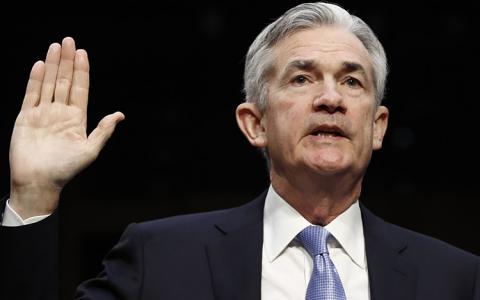
It has been a long year for the Federal Reserve.
Since the first cases of COVID-19 in the United States, the central bank has slashed interest rates to zero, restarted its quantitative easing program, and opened up a slew of emergency loan facilities to backstop markets ranging from corporate debt to municipal bonds.
The beginning of the new year will be a critical inflection point for the U.S. economy. With case counts surging across the country, the Fed will attempt to bridge the next few months until widespread vaccination and herd immunity are achieved.
With interest rates near-zero and likely to stay there through the end of 2023, that means a need for other, unconventional monetary policy tools.
“There is more that we can do, certainly,” Fed Chairman Jerome Powell said December 16, adding that the second half of 2021 should see the economy “performing strongly.”
So what should markets be watching for from the Federal Reserve next year?
Emergency loan facilities
As COVID-19 began ripping through the country in March, the Fed moved to backstop several financial markets and stand up new programs offering credit to business borrowers.
Several of the programs will expire on December 31, at the order of U.S. Treasury Secretary Steven Mnuchin. But if economic conditions worsen next year, the Fed will face a difficult question: whether or not to re-open the facilities.
Three programs in particular will pose legal and political challenges to the Fed: the Municipal Liquidity Facility (loans to state and local governments), the Main Street Lending Program (loans to small- and medium-sized businesses), and the Corporate Credit Facilities (liquidity for corporate debt markets).
Language buried in the over 5,000-page government spending bill, which includes COVID-19 relief, would bar the Fed from either resurrecting those three programs or anything the “same as” those programs.
But current and former Fed officials have been vocal about their desire to keep those emergency programs available into 2021.
The Fed announced on December 29 that the Main Street Lending Program will remain open until January 8, instead of closing at the end of the year so the central bank would have time to process and fund loans submitted on or before December 14. The Fed said Mnuchin approved the extension.
A Treasury Secretary Janet Yellen, pending Senate confirmation, could work with the Fed on other programs in the future. But the new statutory limitations may entangle the Fed in political backlash if it attempts to toe the line on re-opening something close to the three facilities in question.
"How effective that narrowing will be, in terms of freeing up the Fed to do what it most wants to do? It depends on how aggressive the Fed's lawyers want to be,” said Columbia Law professor Kathryn Judge.
Quantitative easing
The Fed’s massive pile of assets totals more than $7 trillion, the consequence of an aggressive pace of quantitative easing in the face of the crisis. The latest guidance from the Federal Open Market Committee makes it clear that its balance sheet will only get bigger until “substantial further progress” is made on the recovery.
More specifically, that means at least $120 billion in monthly purchases ($40 billion in agency mortgage-backed securities and $80 billion in U.S. Treasuries).
“Any time we feel like the economy could use stronger accommodation, we would be prepared to provide it,” Powell said on December 16.
But the Fed has not clarified exactly how it could adjust those purchases. Powell entertained the idea of, for example, targeting longer-dated purchases to push down longer-term borrowing costs.
Similarly, the Fed has not spelled out what a better-than-expected 2021 may mean for its asset purchases. “Substantial further progress” may mean a tapering of its asset purchases would come before the Fed lifts off from zero-interest rates.
The imprecise language, however, will keep Fed watchers and investors guessing on where inflation and unemployment will have to land before quantitative easing is pared back.
“It’s hard to infer when tapering will begin, but we would still pin that sometime around the end of next year,” JPMorgan’s Michael Feroli wrote on December 16.
Reflation may be around the bend
For both interest rate policy and quantitative easing, the Fed will be using inflation as its guiding star to get to the destination of an economy at maximum employment.
In the face of the downside risk of rising COVID-19 cases, the Fed hopes that widespread vaccination and a return to normal will spur consumption that could bring some modest price increases.
A new policy adopted by the Fed in August articulates that the Fed would tolerate inflation “moderately” above its 2% target, meaning that reflation in a possible second half recovery would not trigger an interest rate hike.
Core personal consumption expenditures, the Fed’s preferred measure of inflation, clocked in at just 1.4% in November.
The end game is to keep policy accommodative and give the economy ample time to pull the unemployed back into jobs. As of November, the economy remained 9.8 million jobs short of its pre-pandemic level in February.
“We are committed to allowing the economy to run until we find out what maximum employment means experientially,” San Francisco Fed President Mary Daly said in September.
Constance Hunter, chief economist at KPMG, told Yahoo Finance that she would not expect a rate hike for another year or year and a half.
“A lot of this depends on how broad-based the recovery is, but assuming we can get some reflation going then that would mean they might start changing their language and changing their asset purchases so that we can have slightly tighter monetary conditions going into 2022,” Hunter said.
This article originally appeared on Yahoo! Finance.



